Comprehensive Guide to Water Quality in Idaho State: Contaminants, Issues, and Water Filtration Solutions
by Ryan Moreau / updated February 22nd, 2025
Idaho is renowned for its abundant and diverse water resources—from the pristine mountain lakes like Lake Pend Oreille and Coeur d’Alene Lake to the mighty Snake River that winds through the state. Despite this abundance, Idaho faces complex water quality challenges due to agricultural practices, mining activities, and natural geological factors. In this comprehensive guide, we explore the common contaminants in Idaho’s water, regional water quality challenges, and effective filtration solutions. Start by using our Water Quality Tool to get a customized analysis of your local water conditions.

Overview of Idaho’s Water Sources
Idaho’s water supply is as diverse as its landscape. Key sources include:
- Rivers and Streams: The Snake River, Salmon River, and Clearwater River provide water for municipal use, agriculture, and recreation.
- Mountain Lakes: Lakes such as Coeur d’Alene Lake, Lake Pend Oreille, and Priest Lake are significant sources for local communities and support tourism.
- Groundwater Aquifers: The Eastern Snake River Plain Aquifer is one of the largest and most productive aquifers in the United States, supplying water to many communities and agricultural operations.
- Springs: Numerous springs throughout the state contribute to both surface water and groundwater systems, supporting ecosystems and providing drinking water sources.
Idaho’s rivers and streams not only provide water for communities but are also vital for the state’s agricultural sector, which is a cornerstone of Idaho’s economy. The Snake River, in particular, is a crucial lifeline, supporting irrigation systems that sustain vast farmlands growing potatoes, barley, wheat, and other crops. The state’s mountain lakes and reservoirs also play an essential role in hydroelectric power generation, flood control, and recreational activities like fishing and boating.
However, Idaho’s water sources face challenges from both natural and human activities. Agricultural runoff, mining operations, and natural geological formations can introduce various contaminants into the water supply. Balancing the needs of water users while protecting the quality of these vital resources is a significant ongoing effort in the state.
Common Water Quality Contaminants in Idaho
Idaho’s water sources may contain a range of contaminants due to agricultural activities, mining operations, and natural geological factors. To better understand what might affect your area, start with our Water Quality Tool and then review these common issues:
1. Nitrates
Agricultural runoff in Idaho can elevate nitrate levels in groundwater, posing risks especially to infants. Excess nitrates are associated with methemoglobinemia, also known as “blue baby syndrome.” Areas with intensive farming practices, such as the Snake River Plain, are particularly affected.
The widespread use of fertilizers and improper management of animal waste contribute to nitrate contamination. Private wells are especially vulnerable, as they are not regulated by the Safe Drinking Water Act. Regular testing is crucial for households relying on well water.
Water Filtration Options for Nitrates: Reverse Osmosis Water Filters
2. Arsenic
Natural geological formations in parts of Idaho contribute to arsenic in groundwater. Long-term exposure to arsenic can lead to serious health issues, including cardiovascular problems and cancer. Arsenic levels above EPA standards have been detected in private wells, particularly in southwestern Idaho.
Testing for arsenic is essential for homeowners with private wells. The risk varies depending on the local geology, so understanding the specific conditions in your area is important. Public water systems regularly monitor arsenic levels, but private well owners must take initiative for their own safety.
Water Filtration Options for Arsenic: Reverse Osmosis Water Filters
3. Selenium
Mining activities, especially phosphate mining in southeastern Idaho, have led to elevated levels of selenium in local water sources. Selenium is an essential nutrient but can be toxic at higher concentrations, affecting both human health and wildlife.
Communities near mining sites should be vigilant about testing their water. Selenium contamination can impact aquatic ecosystems, leading to bioaccumulation in fish, which may then pose risks to humans and animals consuming them.
Water Filtration Options for Selenium: Reverse Osmosis Water Filters
4. Uranium and Radon
Certain regions in Idaho have natural uranium deposits, leading to uranium and radon contamination in groundwater. Exposure to uranium can cause kidney damage, while radon is a radioactive gas linked to increased risk of lung cancer.
Homeowners should test both their water and indoor air for radon, as it can enter homes through both water and soil. The Idaho Department of Environmental Quality provides resources for residents to understand and mitigate these risks.
Water Filtration Options for Uranium and Radon: Reverse Osmosis Water Filters with specialized treatments for radioactive contaminants.
5. Microbial Contaminants
Private wells in rural areas of Idaho may face microbial contamination from septic systems, livestock facilities, and wildlife. Bacterial contamination can cause gastrointestinal illnesses and other health issues.
Regular testing and proper well maintenance are critical. Shallow wells and wells located near potential contamination sources are at higher risk. Disinfecting wells and using appropriate filtration systems can help ensure safe drinking water.
Water Filtration Options for Microbial Contaminants: Reverse Osmosis Water Filters with UV disinfection systems can effectively neutralize bacteria and viruses.
6. Phosphorus and Eutrophication
Excess phosphorus from agricultural runoff can lead to algal blooms in lakes and reservoirs, such as Coeur d’Alene Lake. Algal blooms deplete oxygen levels in water, harming aquatic life and potentially producing toxins harmful to humans.
While phosphorus is a concern, treating drinking water for phosphorus is typically managed at the community water system level. Residents relying on surface water sources should stay informed about local water quality advisories, particularly during algal bloom seasons.
Household filtration systems may not remove algal toxins, so alternative water sources or boiling water may be recommended during outbreaks.
7. Heavy Metals (Lead and Copper)
Aging infrastructure in some Idaho communities can lead to concerns over lead and copper contamination. Corrosion in old pipes and plumbing fixtures can release these metals into the water supply, potentially causing developmental issues in children and health problems in adults.
Testing for lead and copper, especially in older homes, is important. Replacing lead-containing plumbing fixtures and using appropriate filtration can mitigate these risks.
Water Filtration Options for Heavy Metals: Reverse Osmosis Water Filters, Activated Carbon Water Filters
8. Mercury
Mercury can enter water bodies through atmospheric deposition and industrial processes. Although not widespread, mercury contamination can be a concern in certain areas and can accumulate in fish, posing risks to those who consume them.
The Idaho Fish Consumption Advisory Program provides guidelines on safe fish consumption levels. While mercury in drinking water is less common, awareness and testing in affected areas are prudent.
Water Filtration Options for Mercury: Reverse Osmosis Water Filters
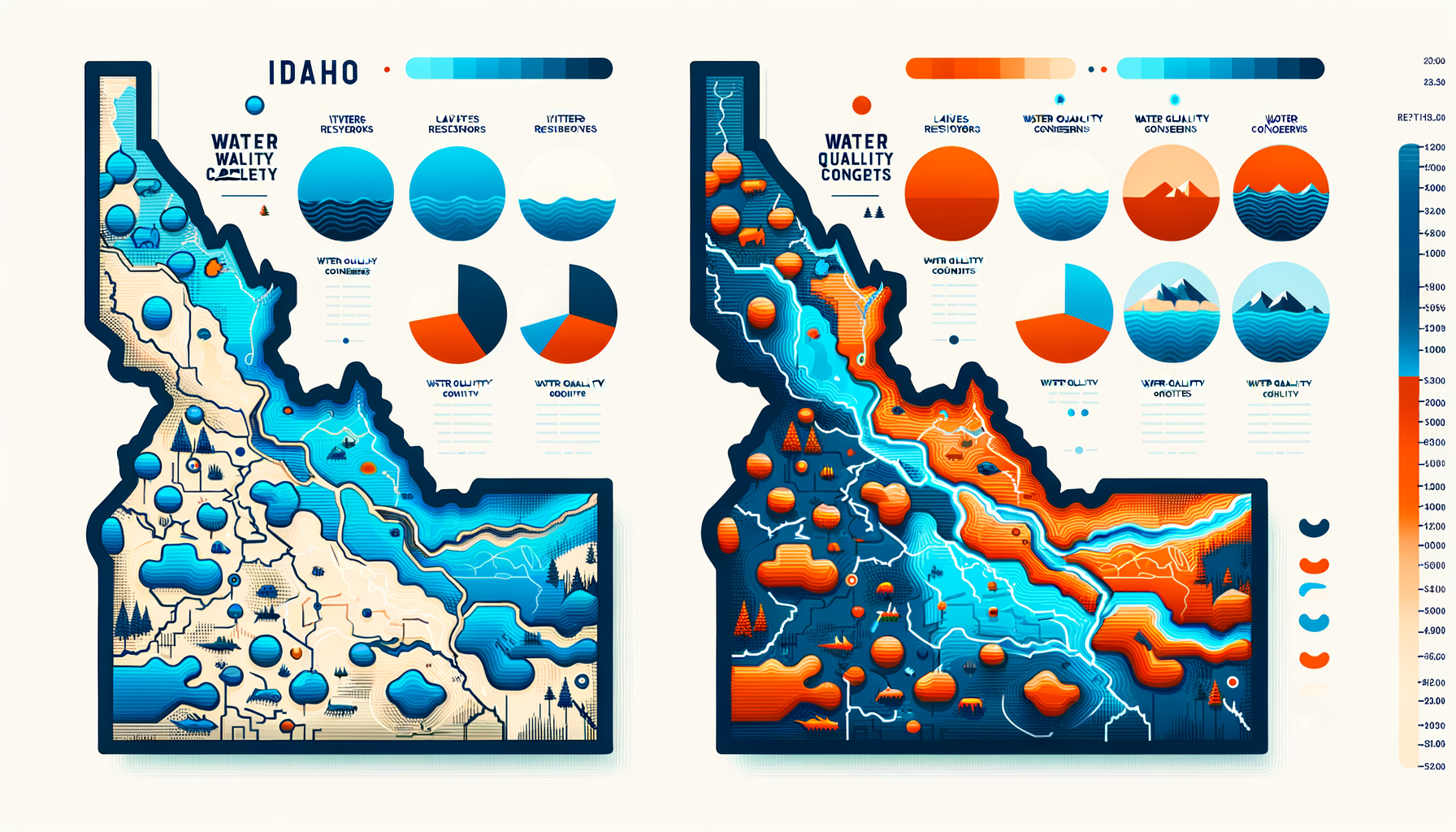
Regional Water Quality Challenges in Idaho
Idaho’s diverse geography and economic activities contribute to various regional water quality challenges. According to the EPA and the Idaho Department of Environmental Quality (IDEQ), key challenges include:
1. Snake River Plain: Agricultural Runoff
The Snake River Plain, a major agricultural area in Idaho, faces challenges from agricultural runoff. Intensive farming practices lead to elevated levels of nitrates, phosphorus, and pesticides in the water supply.
Efforts are being made to implement best management practices (BMPs) among farmers to reduce runoff, but residents relying on groundwater in these areas should remain vigilant about water quality.
2. Southeastern Idaho: Mining Pollution
Phosphate mining in southeastern Idaho has resulted in elevated selenium levels in nearby water sources. Communities in this region face potential exposure to selenium, which can have harmful effects on both humans and wildlife.
The IDEQ and mining companies are working on remediation efforts, but ongoing monitoring and individual water testing remain important for residents.
3. Northern Idaho: Legacy Mining Impacts
Historical mining activities in northern Idaho’s Coeur d’Alene Basin have left a legacy of heavy metal contamination, including lead, arsenic, and mercury, in soils and water bodies.
Cleanup efforts have significantly reduced contamination, but residents should be aware of potential risks, especially when using water from private wells or engaging in recreational activities in affected areas.
General Water Characteristics in Idaho
Beyond specific contaminants, Idaho’s varied geology and climate result in unique water characteristics. Understanding these traits helps in selecting the right treatment solutions:
1. Water Hardness
Water hardness in Idaho varies by region. Many areas, particularly those relying on groundwater from limestone and dolomite formations, experience hard water due to high levels of calcium and magnesium. Hard water can cause scale buildup in pipes, reduce the efficiency of water heaters, and lessen soap effectiveness.
For households experiencing hard water, water softeners are recommended. If you’re unsure whether you need a water softener or which type fits your family’s needs, try our Water Softener Calculator for personalized guidance.
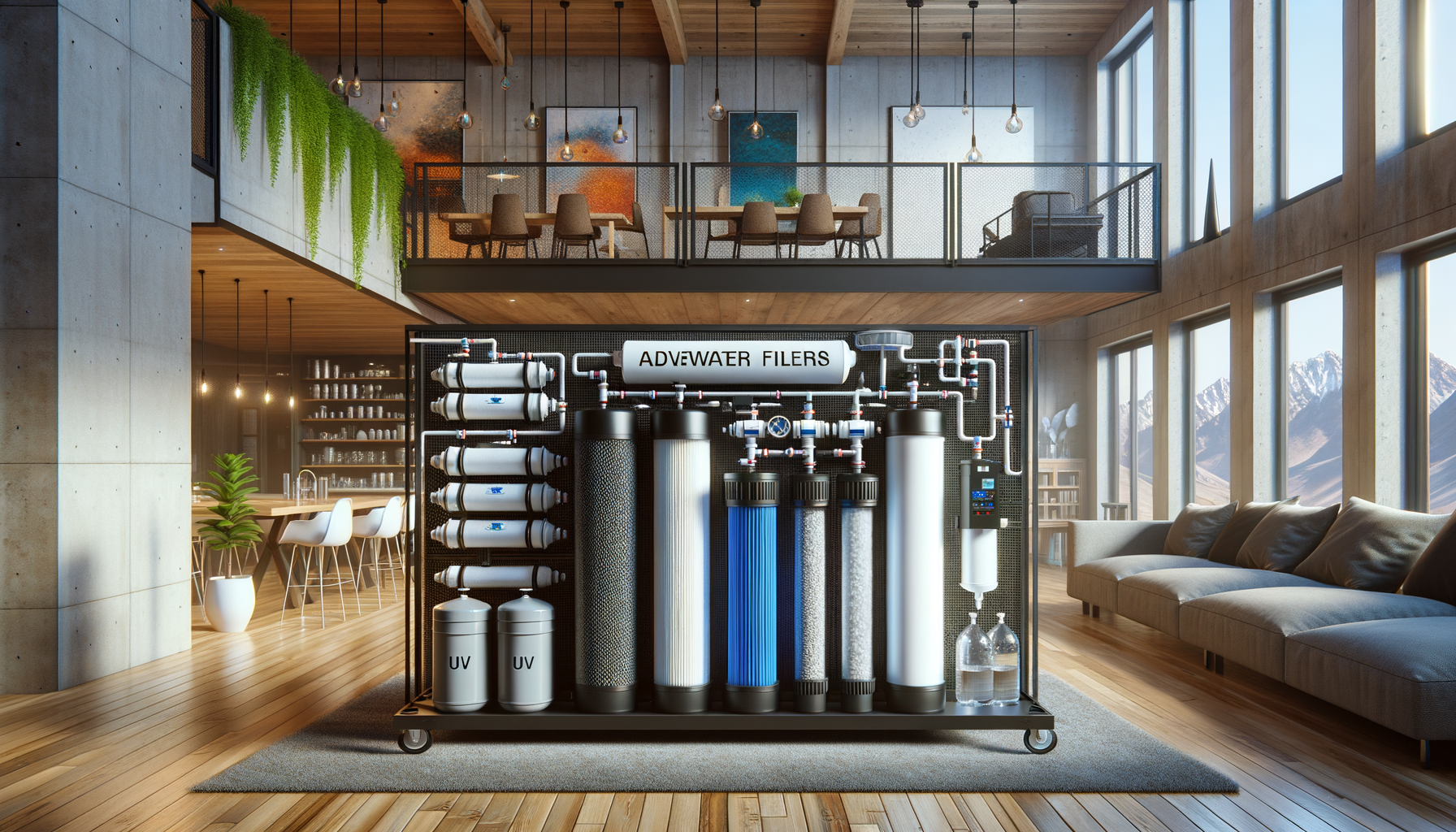
2. Corrosive Water Conditions
In some regions of Idaho, particularly where the water is low in minerals and slightly acidic, corrosive water conditions can occur. This can lead to leaching of metals like lead and copper from plumbing systems.
- Acidic Conditions: Water with a lower pH can corrode plumbing materials over time.
- Infrastructure Vulnerability: Older buildings and systems are more prone to corrosion-related issues.
To mitigate corrosive conditions, installing an acid neutralizer can help stabilize pH and protect your plumbing.
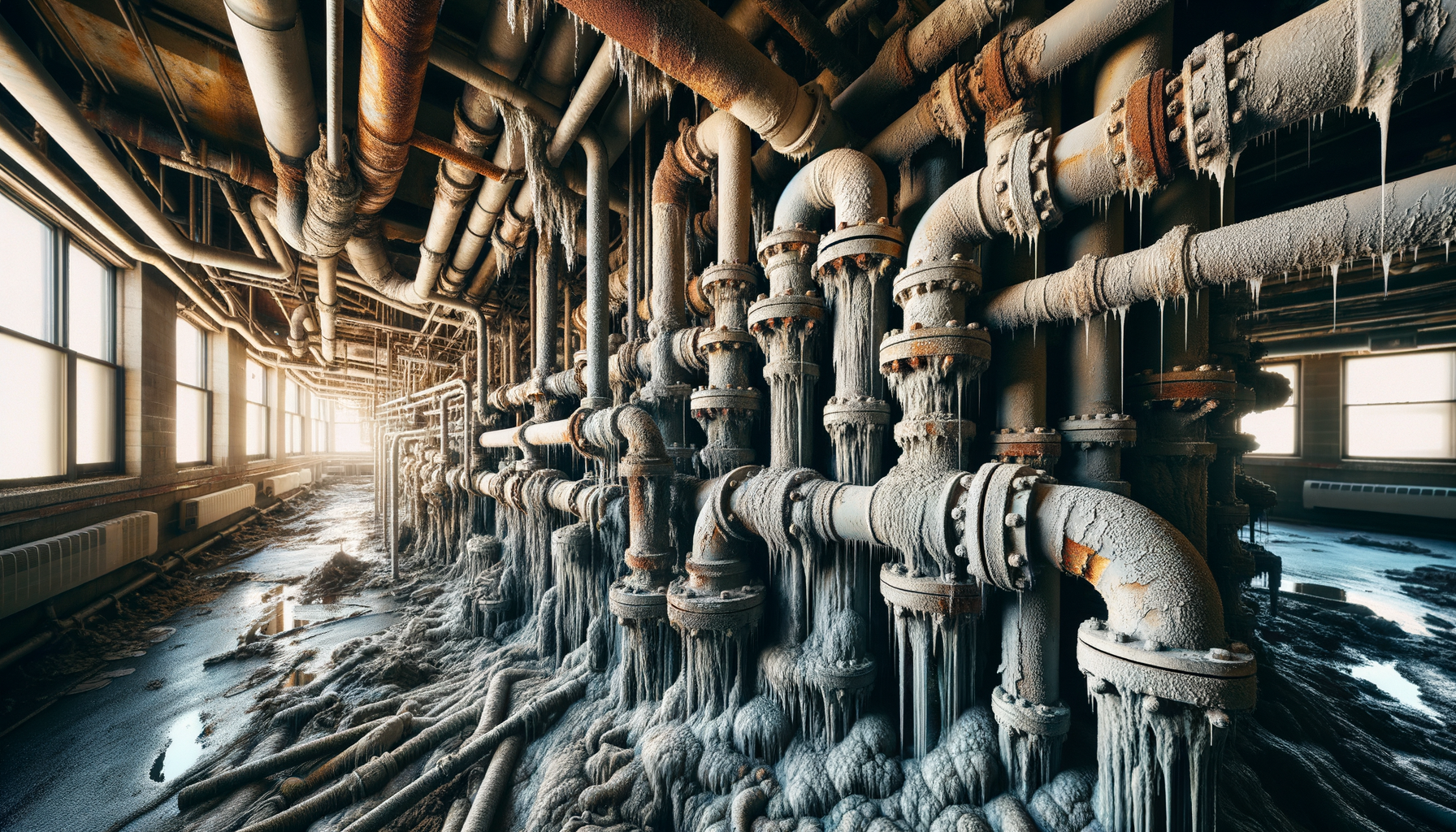
3. Impact of Regional Geology
Idaho’s geology significantly influences water quality. Areas with volcanic rock formations may have elevated levels of certain minerals and metals, such as arsenic and uranium. The Eastern Snake River Plain Aquifer, while a prolific source of groundwater, requires careful management to prevent overuse and contamination.
- Volcanic Rock Formations: Contribute to unique mineral content in local water supplies.
- Aquifer Management: Ensuring sustainable use of groundwater resources is vital for long-term availability.
Understanding the geological context of your water source can inform the selection of appropriate treatment methods to address specific concerns arising from natural mineral content.
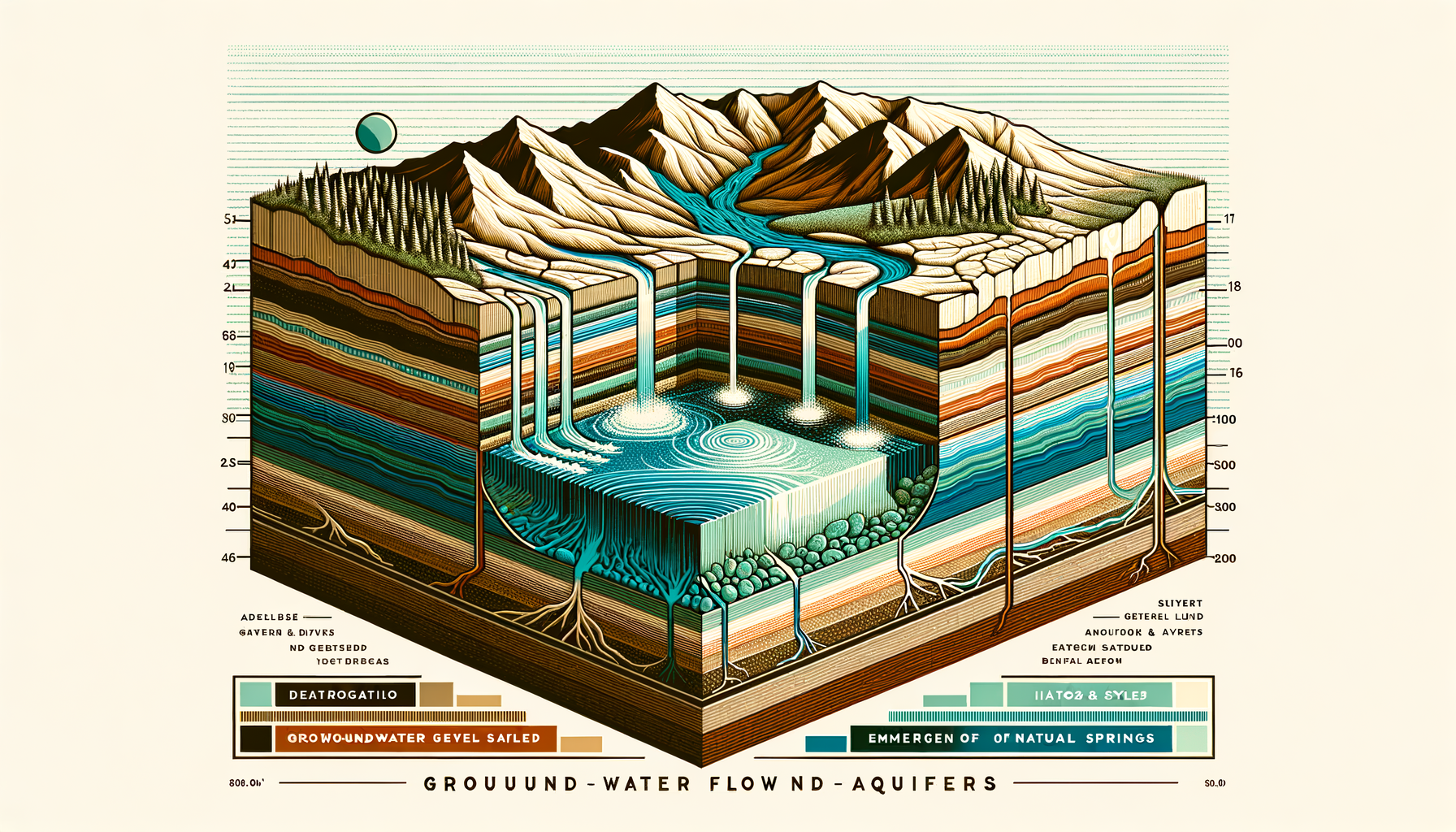
Utilizing the Water Quality Tool for Idaho Residents
Understanding your local water quality is essential for ensuring safe drinking water. Our Water Quality Tool enables Idaho residents to:
- Enter their zip code for a detailed analysis of local water sources
- View data on common contaminants in public and private water supplies
- Receive personalized recommendations for filtration systems based on your water quality challenges
The tool aggregates information from authoritative sources such as the EPA and local agencies, providing up-to-date data on water quality issues specific to your area. By understanding the unique challenges in your locality, you can take proactive steps to ensure the safety and quality of your household water supply.
Recommended Filtration Solutions for Common Idaho Contaminants
Based on the prevalent contaminants identified in Idaho’s water sources, the following filtration systems are highly recommended:
1. Reverse Osmosis Systems
Reverse Osmosis Systems offer broad-spectrum removal of nitrates, arsenic, selenium, uranium, and other contaminants common in Idaho water sources. These systems are effective for both under-sink and whole-house installations, providing comprehensive protection.
Reverse osmosis systems work by forcing water through a semi-permeable membrane, filtering out contaminants at the molecular level. They are highly effective and can significantly improve the safety and taste of your drinking water.
2. Activated Carbon Filters
Activated Carbon Filters effectively reduce levels of chlorine, volatile organic compounds (VOCs), and can help in reducing some heavy metals and radon byproducts. They improve taste and odor, making them ideal for municipal water supplies.
While not as comprehensive as reverse osmosis systems, activated carbon filters are a cost-effective solution for addressing specific contaminants and improving overall water quality.
3. Water Softeners
For residents experiencing hard water issues, installing a water softener can alleviate problems caused by high mineral content. Water softeners remove calcium and magnesium ions, preventing scale buildup and extending the lifespan of appliances.
Our Water Softener Calculator can help you determine the appropriate size and type of system for your household.
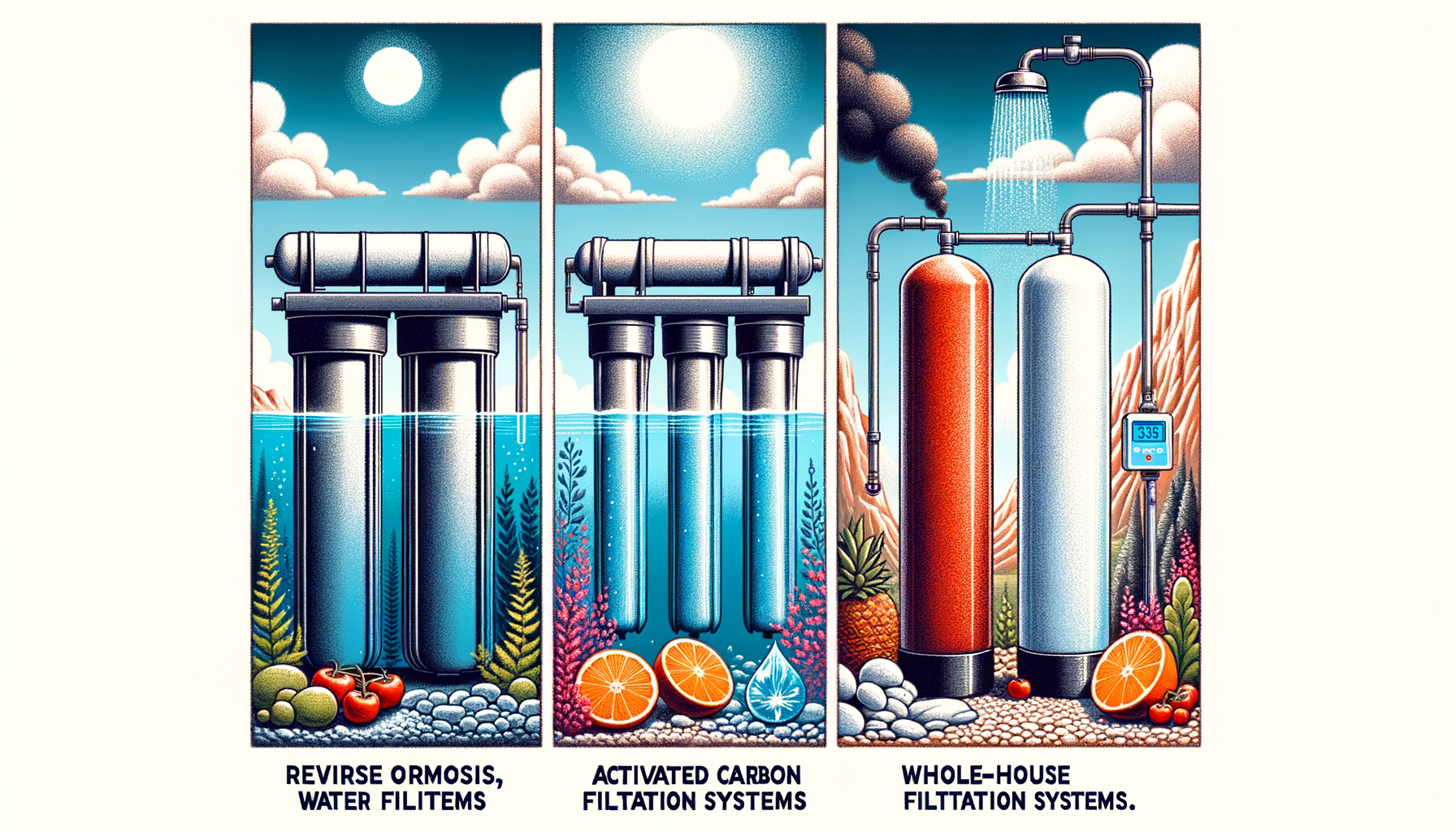
Local Water Testing Services in Idaho
Accurate water testing is essential to pinpoint the contaminants in your water supply. We recommend using SimpleLab for comprehensive water quality analysis. Their user-friendly kits and detailed lab reports empower you to make informed decisions about your water filtration system.
Additionally, the Idaho Department of Environmental Quality offers resources and guidance for residents, including information on certified laboratories and recommended testing schedules, particularly for private well owners.
Case Studies: Addressing Water Quality Issues in Idaho
Real-world examples provide valuable insights into how various water quality challenges in Idaho are being addressed:
1. Twin Falls: Combating Nitrate Contamination
The Twin Falls area, located in the Snake River Plain, has faced challenges with nitrate contamination due to intensive agricultural activities. Local initiatives have encouraged farmers to adopt nutrient management plans and implement buffer zones to reduce runoff.
Many residents have installed reverse osmosis systems to ensure their drinking water is safe, while ongoing community efforts focus on sustainable farming practices to address the issue at its source.
2. Pocatello: Addressing Selenium from Mining Operations
In Pocatello and the surrounding regions, phosphate mining has resulted in elevated selenium levels in water sources. Collaborative efforts between mining companies, the IDEQ, and local communities have led to remediation projects and stricter environmental controls.
Residents have been proactive in testing their water and installing appropriate filtration systems, such as reverse osmosis units, to reduce selenium exposure.
3. Coeur d’Alene Basin: Legacy Mining Cleanup
The Coeur d’Alene Basin has been the focus of extensive cleanup efforts due to historical mining activities that left behind heavy metal contamination. The EPA’s Superfund program has been involved in remediation projects to reduce lead and arsenic levels in soils and water bodies.
Community education programs have raised awareness about the risks, and many households have taken measures to protect their water supply through filtration and regular testing.
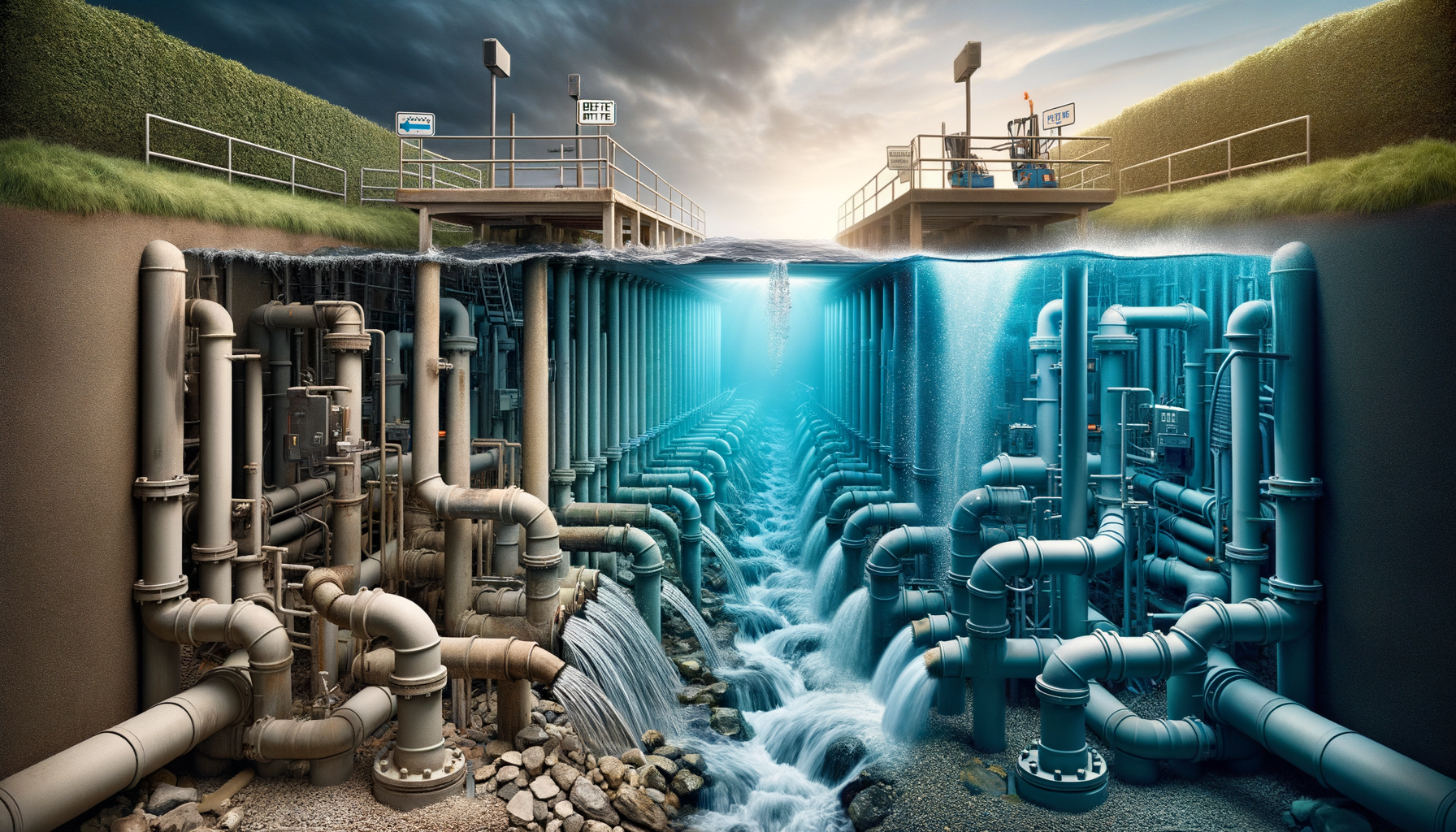
Call to Action
Idaho’s abundant water resources—from the majestic rivers to the vital aquifers beneath the ground—are integral to the state’s way of life. However, the diverse challenges posed by agricultural practices, mining activities, and natural geology necessitate proactive water quality management.
Understanding your local water challenges and implementing effective filtration solutions is essential for safeguarding your household’s health. Start by entering your zip code into our Water Quality Tool for a detailed analysis of your water supply. Then, explore our filter review articles to find the most effective system for your needs. Finally, confirm your water’s safety with comprehensive water testing services to ensure you have the clean, safe water your home deserves.
